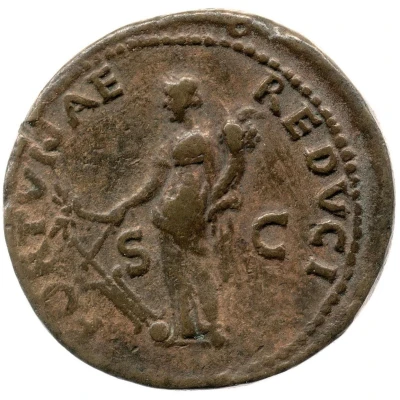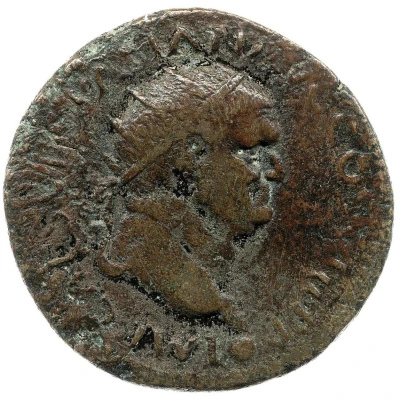


© Trustees of the British Museum
Dupondius - Vespasian FORTVNAE REDVCI S C; Fortuna
| Bronze | 12.1 g | - |
| Issuer | Rome › Roman Empire (27 BC - 395 AD) |
|---|---|
| Emperor | Vespasian (Titus Flavius Vespasianus) (69-79) |
| Type | Standard circulation coin |
| Years | 77-78 |
| Value | 1 Dupondius = ⅛ Denarius |
| Currency | Denarius, Reform of Augustus (27 BC – AD 215) |
| Composition | Bronze |
| Weight | 12.1 g |
| Shape | Round (irregular) |
| Technique | Hammered |
| Demonetized | Yes |
| Updated | 2024-10-06 |
| Numista | N#250133 |
|---|---|
| Rarity index | 100% |
Reverse
Fortuna, draped, standing left, holding rudder set on globe, cornucopiae, and branch.
Script: Latin
Lettering: FORTVNAE REDVCI S C
Translation:
Fortunae Reduci. Senatus Consultum.
Returning fortune. Decree of the senate.
Comment
Mass varies: 12.09–12.13 g;Source: Online Coins of the Roman Empire (OCRE)
Interesting fact
The Dupondius coin featuring Vespasian and Fortuna is interesting because it highlights the Roman Empire's use of propaganda through currency. The coin's design depicts Fortuna, the goddess of luck and prosperity, on one side, and Vespasian on the other. This was a strategic move by Vespasian to promote his image as a wise and prosperous leader, as Fortuna was seen as a symbol of good fortune and prosperity. By associating himself with this goddess, Vespasian aimed to reinforce his legitimacy and popularity among the Roman people. This coin is a prime example of how currency was used as a tool for political propaganda in ancient Rome.

